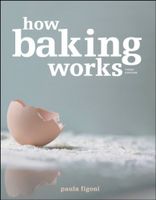Advertisement
Conclusions
By Paula Figoni
Published 2003
Select one from the choices in bold or fill in the blanks.
- Rolls made with white rye required more/less/same amount of water to form an acceptable dough than those made entirely with bread flour. This is because rye flour contains more pentosan/beta-glucan/mucilage gums than bread flour. The difference in water absorption was small/moderate/large.
- Rolls made with white rye flour were shorter than/taller than/the same height as those made entirely with bread flour. This is because white rye flour contains more/less/the same amount of gluten than bread flour and has a lower/higher/same fermentation tolerance than bread flour. The difference in height was small/moderate/large.
The differences in texture between rolls made with white rye flour and those made entirely with bread flour was small/moderate/large. The differences in texture were as follows:
____________________
____________________
____________________
Compare rolls that were made with corn flour with those made entirely with bread flour. What were the main differences in appearance, flavor, and texture?
____________________
____________________
____________________
How do you explain these differences?
____________________
____________________
____________________
Compare rolls that were made with oat flour with those made entirely with bread flour. What were the main differences in appearance, flavor, and texture?
____________________
____________________
____________________
How do you explain these differences?
____________________
____________________
____________________
Which rolls did you feel were acceptable overall, and why?
____________________
____________________
____________________
Based on the results of this experiment, which flours are not acceptable for use in yeast-raised products? Explain your answer.
____________________
____________________
____________________
Rank flours in roll height from the one that produced the shortest roll to the tallest. How can you explain these differences in roll height?
____________________
____________________
____________________
Rank flours in roll toughness from the flour that produced the toughest roll to the most tender. How can you explain these differences in toughness?
____________________
____________________
____________________
Based on the results of this experiment, which flours do you think could be used at a higher level than 40 percent without sacrificing quality?
____________________
____________________
____________________
Based on the results of this experiment, which flours do you think should be used at a lower level than 40 percent so they are acceptable?
____________________
____________________
____________________
Explain why variety breads (those made with rye, oats, corn, etc.) sold in the United States typically contain a hard wheat flour in their formulas.
____________________
____________________
____________________

